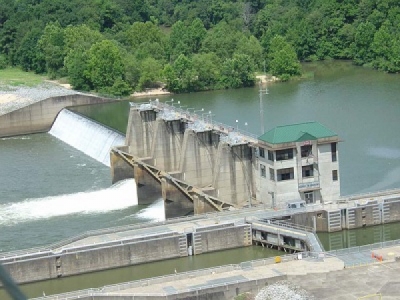
Posted on March 22, 2018
By Jeremy Wise, Dothan Eagle
One of the initial issues the December 2015 flood caused for the George W. Andrews lock near Columbia has been addressed, but other problems still remain.
According to Tim Oberle, a deputy public affairs officer for the U.S. Army Corps of Engineers’ Mobile office, the flood deposited large amounts of sediment into the lock chamber, preventing the lock’s gates from moving. The Corps of Engineers has repaired that problem, but the flood also caused some areas of the river to become very shallow – shoaling – an issue that remains unaddressed.
The Corps of Engineers has not received additional funding needed for dredging of the area, Oberle said. Dredging involves removing sediment and other materials from the bottom of the river, which makes the river deeper and more navigable for larger vessels.
One other problem has surfaced regarding the locks since the December 2015 flood. One of the hydraulic cylinders used in the lock has failed, and further investigation revealed two others were cracked and subject to failures, Oberle said.
The Army Corps of Engineers continues to request funding that would help them repair the problems. Since the Apalachicola-Chattahoochee-Flint river system is classified as a “low-use waterway,” it has not ranked high enough on the priority list to receive the necessary funds, Oberle added.
Farther upstream at Fort Gaines, Georgia, the Walter F. George lock also remains closed. Structural problems discovered before the 2015 flood prompted engineers to take it offline, Oberle said, and the agency continues to seek funding for the deficiencies.
Larger vessels use locks to navigate certain rivers. Ships will enter a lock chamber and wait for the water levels to either rise or fall to reach the next portion of the waterway.
Source: Dothan Eagle





